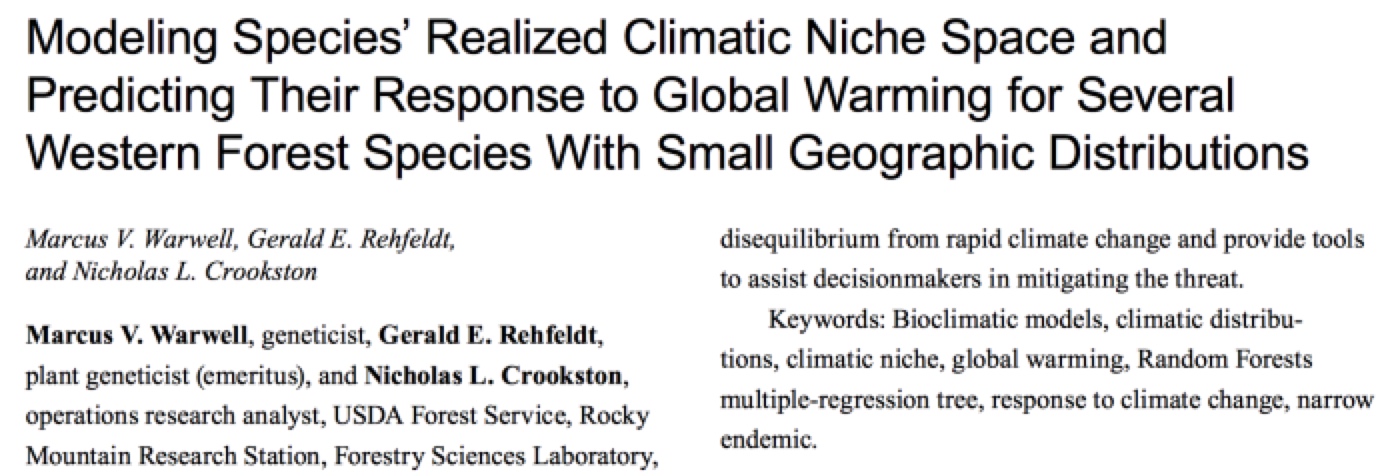"assisted migration" experiment in Lewiston, Idaho
November 2016
Two current researchers at the U.S. Forest Service research station in Moscow, Idaho, joined us for an excursion to the Xeriscape Demonstration Project in Modie Park (in Lewiston). They were
Marcus Warwell and
Ned Klopfenstein. (Connie's husband, Michael Dowd, took extensive video during the site visit, from which the following images were extracted for use here.)
(Left to right): Connie Barlow, Jerry Rehfeldt, Marcus Warwell, and Ned Klopfenstein.
The paper above was published in 2012, and Arizona Cypress was one of the species modeled.
Right: Marcus is unsure how to respond to Connie's confirmation that she is indeed "the woman who pooped trees", as Jerry explained that that is how Connie did an assisted migration project for Alligator Juniper this past summer.
The focal tree for episode 2 is Smooth Arizona Cypress.
53 minutes - published June 13, 2014. WATCH
photo-essay by Connie Barlow (photos by Michael Dowd)
Connie Barlow, founder of Torreya Guardians, had an opportunity to meet for the first time with one of the U.S Forest Service's key researchers, Gerald Rehfeldt (retired), on how ongoing and projected climate change will alter the habitats and range projections for scores of trees native to the western USA. (On the Assisted Migration Scholarly Links page that Connie maintains, no other researcher has more publications than Rehfeldt has.)
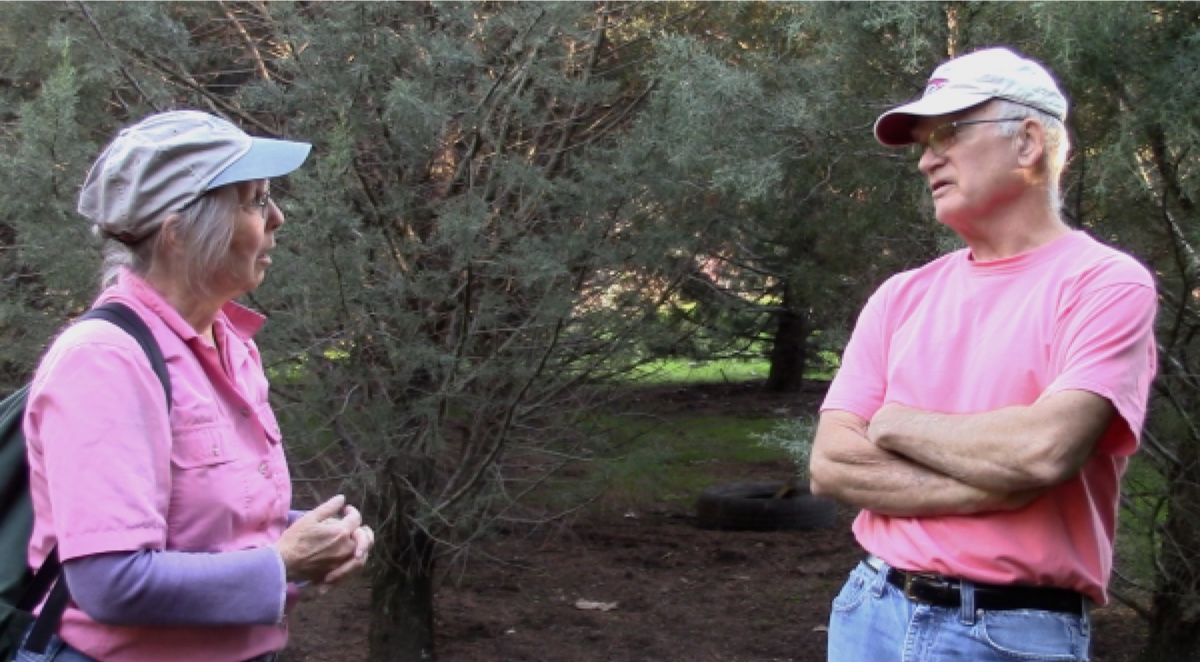
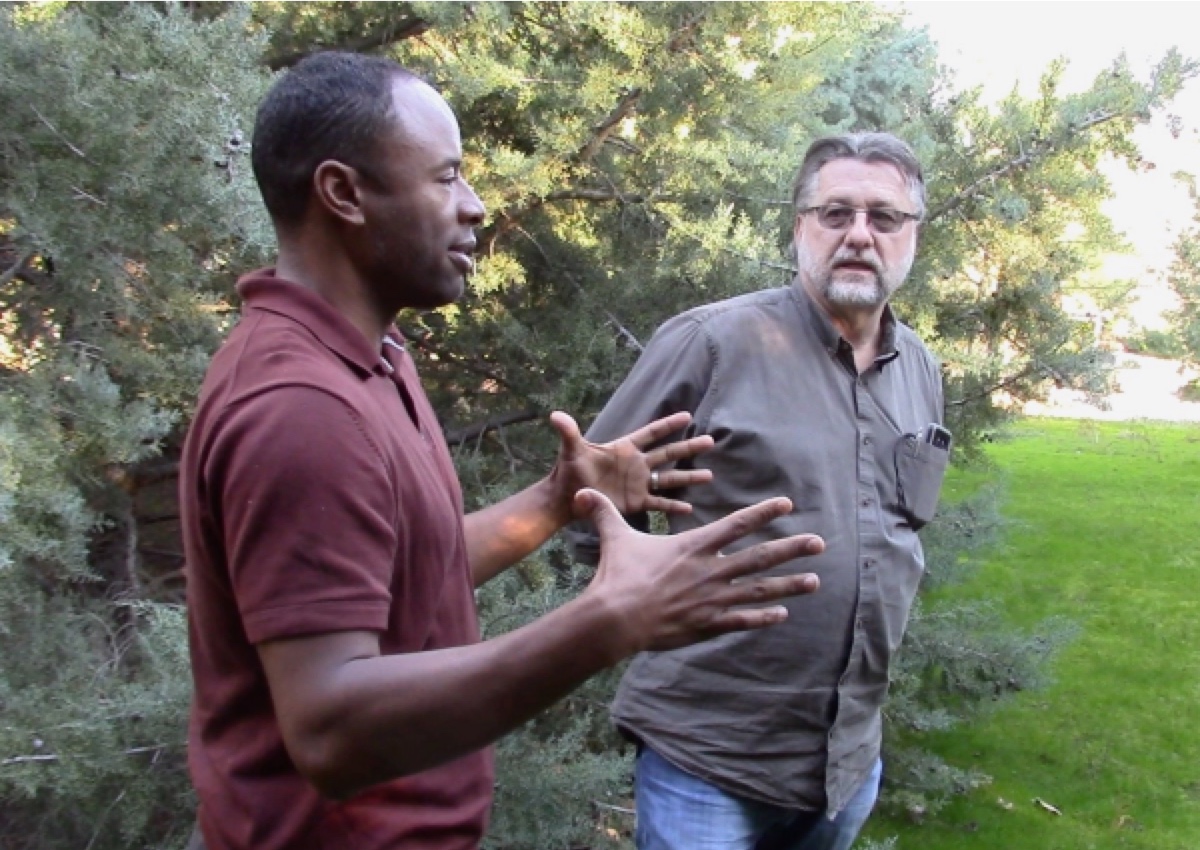
All are standing in front of Arizona Cypresses planted in 1995.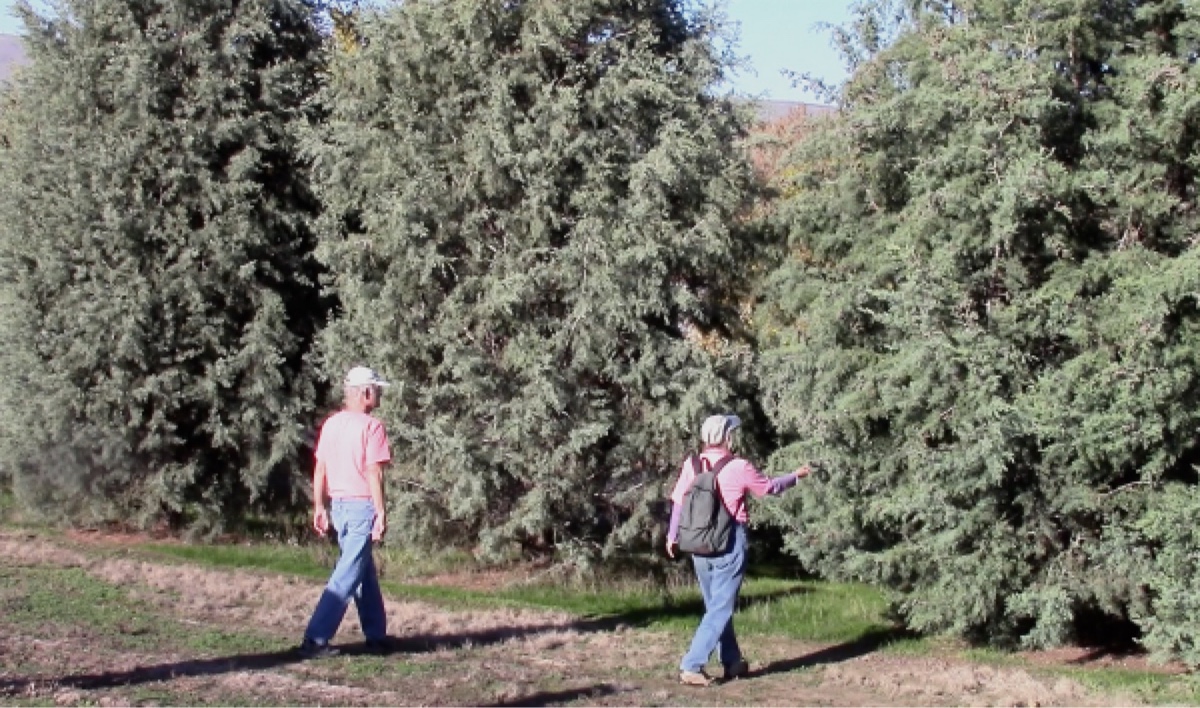
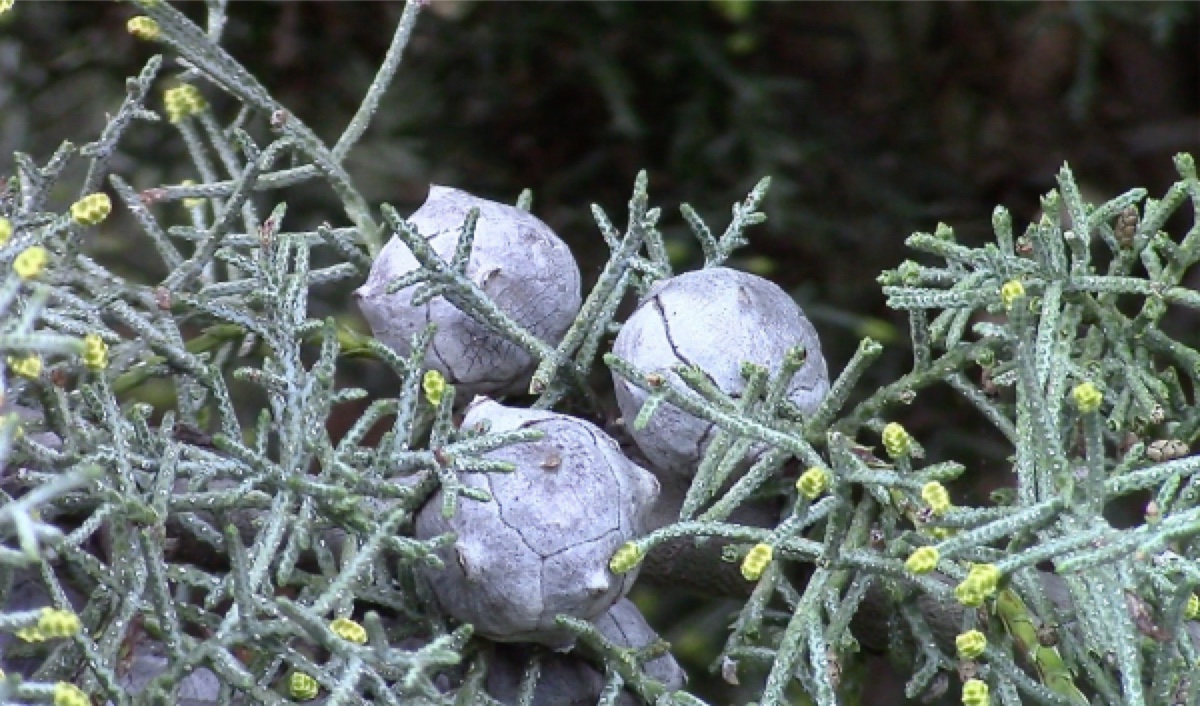
Rehfeldt and Barlow approach the Arizona Cypresses. Rehfeldt explained that the trees had been germinated at the USFS station in Moscow, Idaho, and grown for a year there, then transplanted to Lewiston using an experimental design at this "common garden" site. The experimental interest was in testing the species' ability to survive and perhaps thrive in the climate of Lewiston (which is lower elevation and thus warmer than the Moscow gardens to the north). Four varieties of Cupressus arizonica were planted: the roughbark (var. arizonica), the smoothbark (var. glabra), the Piute (var. nevadensis), and the Cuyamaca (var. stephensonii), the latter of which is critically endangered near San Diego, California.
Notice that two of the three coauthors were on this 2016 Lewiston field trip.
Meanwhile the subspecies currently east of Bakersfield CA will no longer survive in its current habitat by 2060: "By decade 2030, the Paiute cypress realized climatic niche space will lie outside its contemporary distribution. By 2060, the realized climatic niche space of this subspecies occurs exclusively in Oregon."
Note: The importance of maintaining the genetic diversity within the Arizona Cypress complex during climate change is grounded in this 1997 background document: "Quantitative Analyses of the Genetic Structure of Closely Related Conifers with Disparate Distributions and Demographics: The Cupressus Arizonica Complex", by Gerald E. Rehfeldt. He concludes that: "perpetuation undoubtedly will require human intervention, particularly in the face of rapid climate shifts (see Wigley and Raper, 1992). The two primary human roles most likely will be to assist migration by maintaining the appropriate habitat and providing the genotypes appropriate to those habitats."
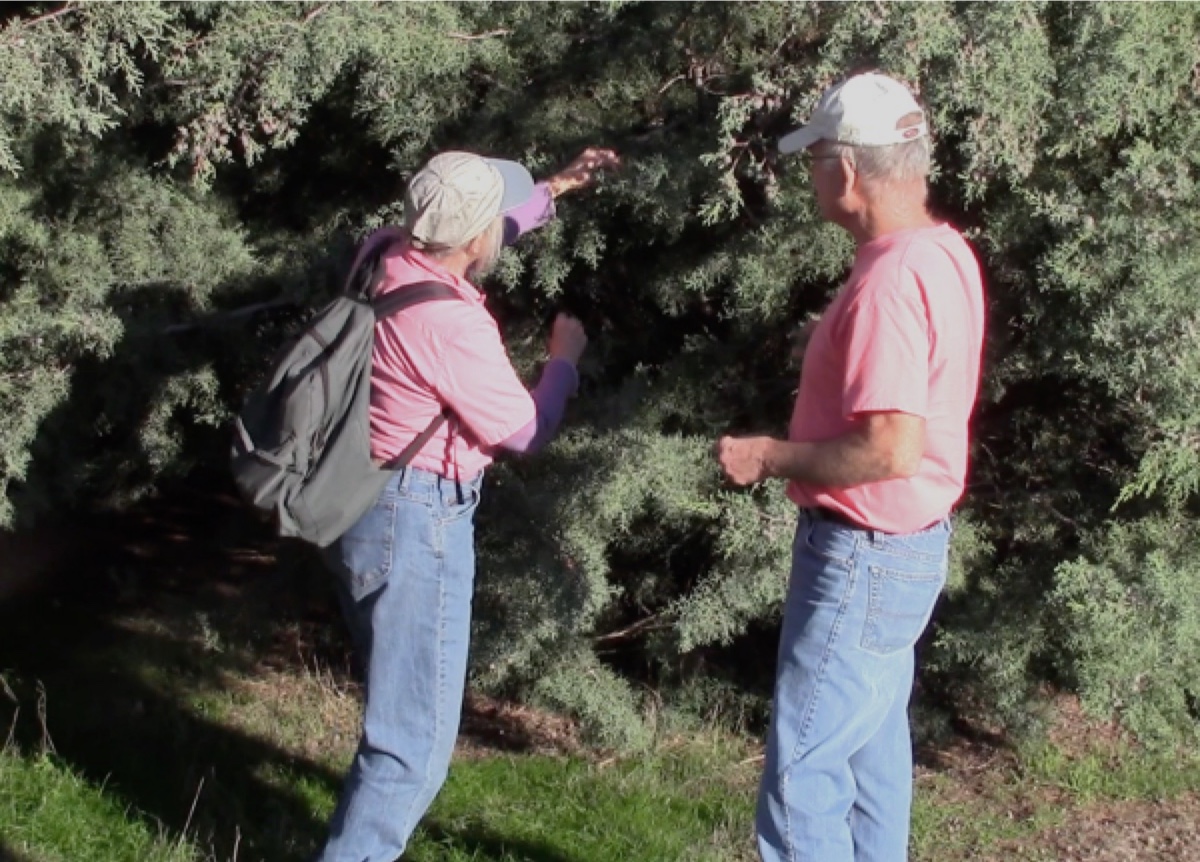
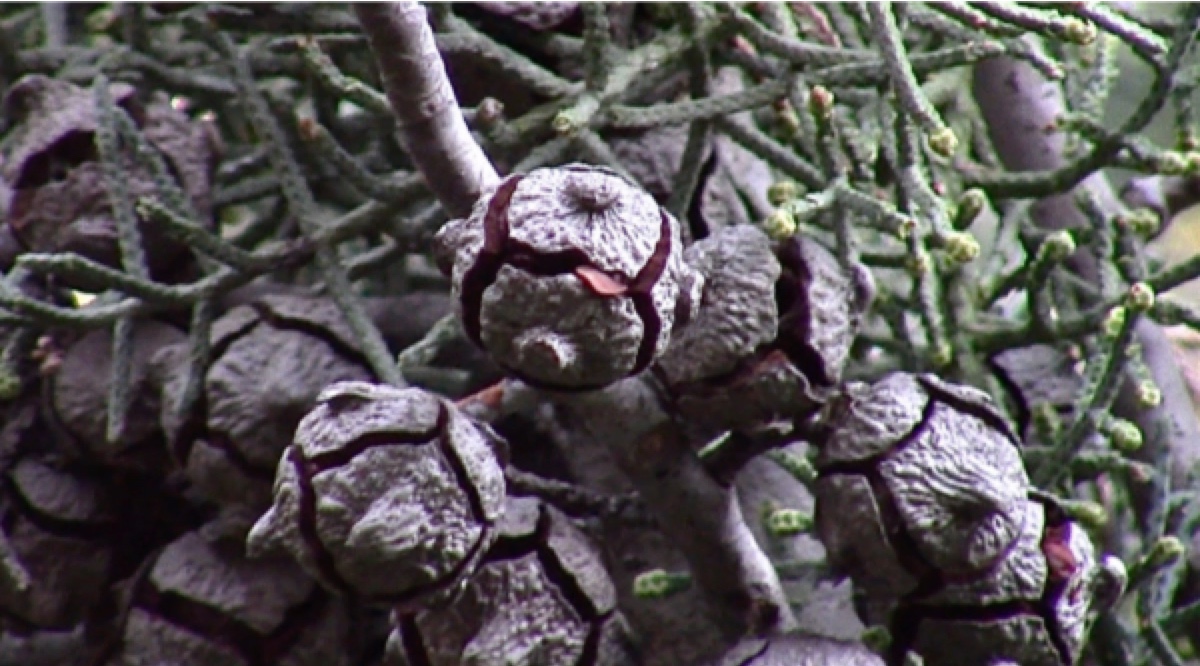
Barlow and Rehfeldt shared ideas about Arizona cypress's evolved mode of seed dispersal. Rehfeldt called attention to the tree's serotinous cone structure, which Barlow agrees is a sign of adaptation to fire (the cones open with intense heat). Equally, Barlow asserted, the delayed-release adaptation can occur without fire, thus enabling a single-year of abundant seed reproduction to disperse over a number of years, which can be a valuable adaptation where drought is the norm and only rarely are rains sufficient to ensure germination and establishment. She pointed to (a) the length of time that older cones remain on the parent tree, and (b) observations of seeds occasionally becoming visible for easy expulsion (or harvesting by small birds) from older cones (above right, center of photo).
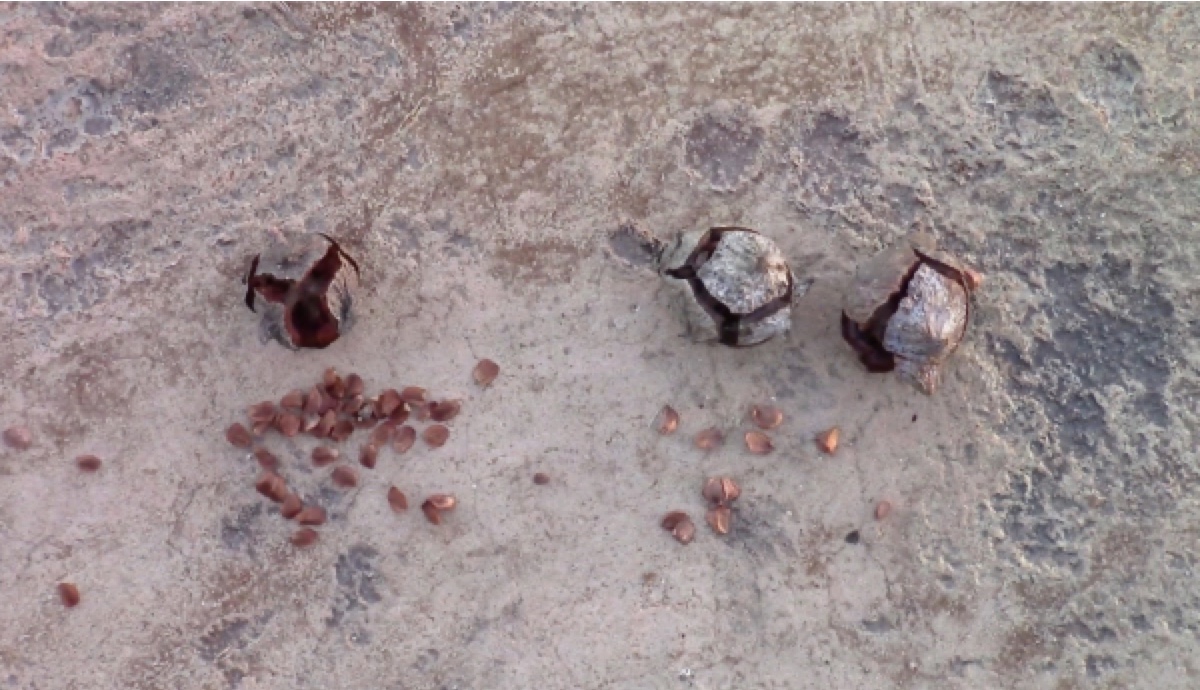
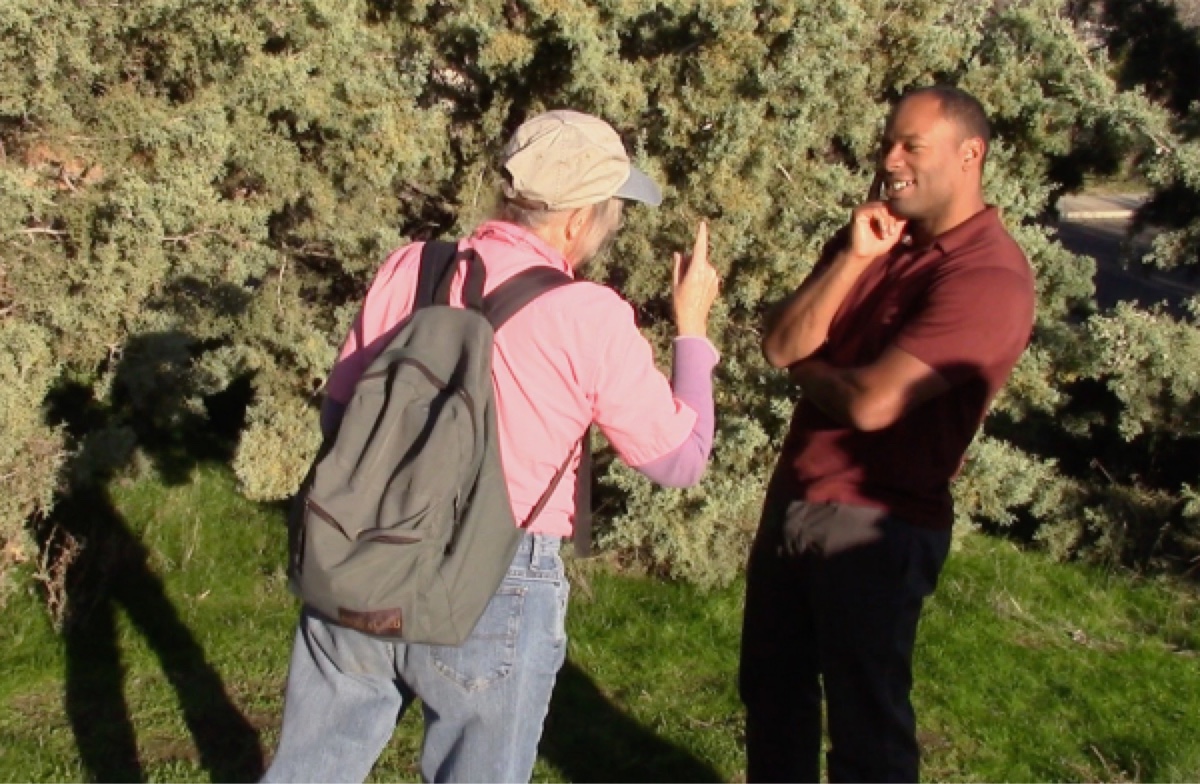
Left: Connie stayed with the trees for about an hour longer than the others, who needed to drive back to Moscow, Idaho. During that time she attempted to learn if there were perhaps color differences in the seeds between the arizonica and glabra varieties of Arizona cypress, as her opening of cones seemed to indicate that glabra (left) was much redder than arizonica (right). Although arizonica (rough bark) was more abundant on the plot than glabra (smooth bark), it seemed that glabra had far more seed cones and possibly viable seeds than arizonica. Could that be because glabra is the northern-most variety of Arizona cypress?
WATCH A VIDEO CONNIE PRODUCED ON ARIZONA CYPRESS in 2014:
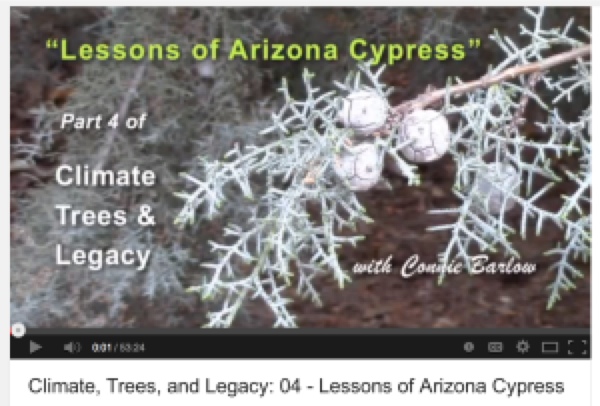
Pt. 4: LESSONS OF ARIZONA CYPRESS
Lessons discerned:
(1) The landscaping business can do no-cost assisted migration. (2) Species with disjunct populations have special needs.
(3) Taxonomic "Lumpers" v. "Splitters" affect conservation views.
(4) Big difference bt. natural v. human rates of climate change.
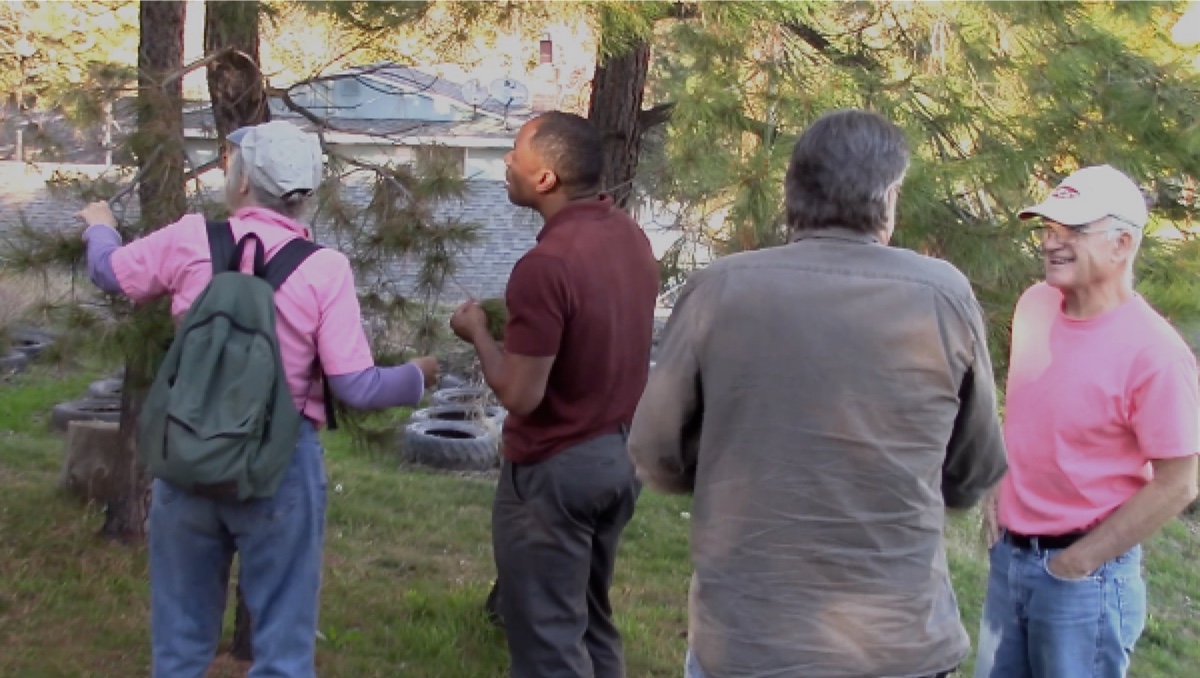
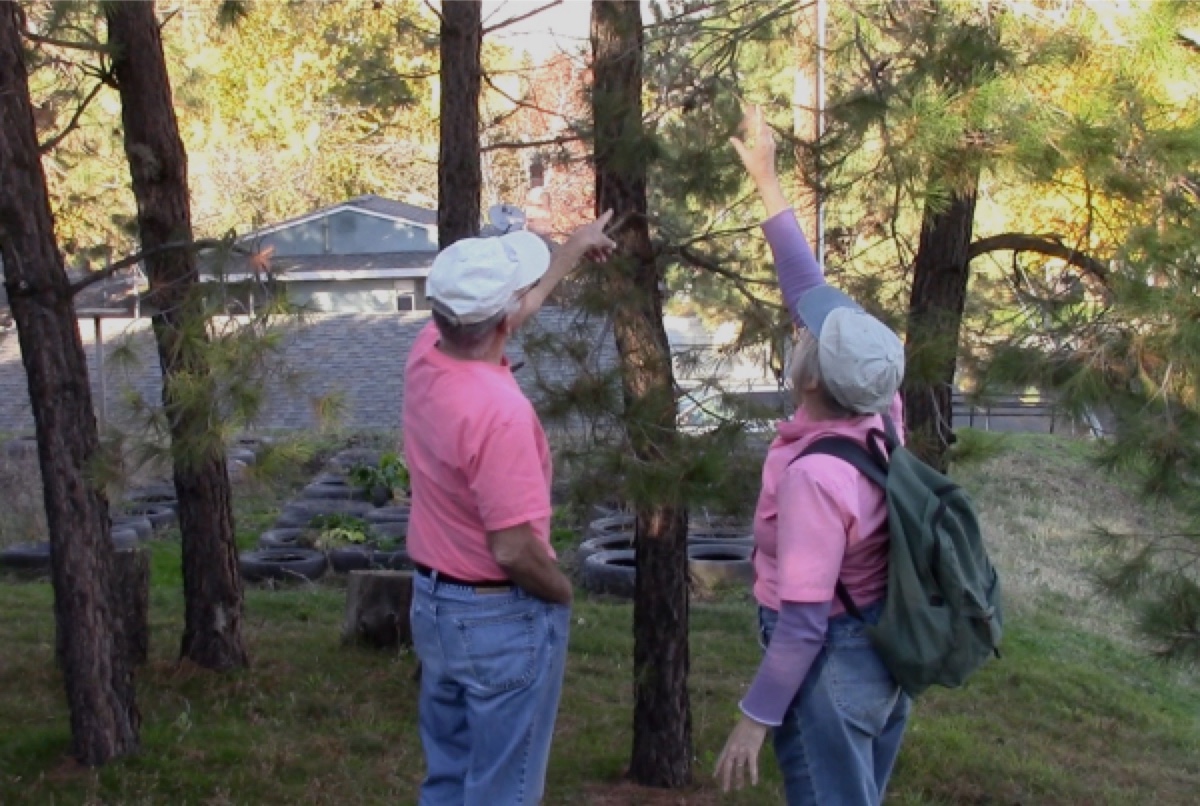
Connie Barlow, Marcus Warwell, Ned Klopfenstein, and Jerry Rehfeldt examine the 5 specimens of Chihuahua Pine.
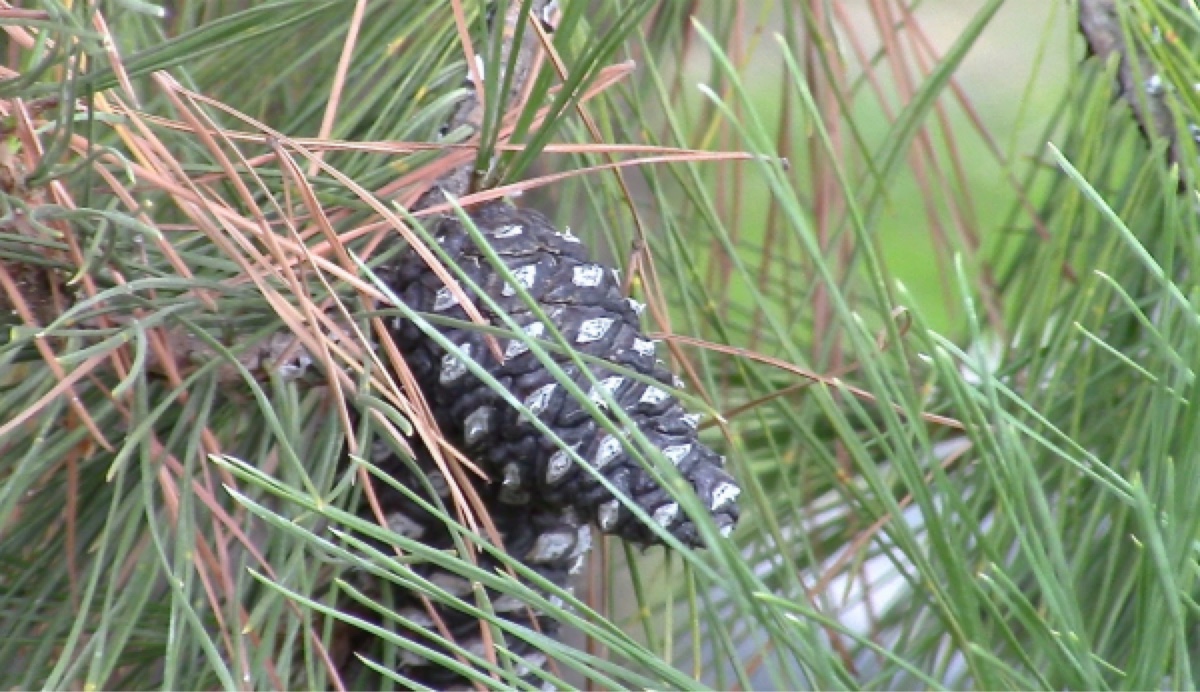
Chihuahua Pine (whose range is mostly in Mexico, barely extending northward into Arizona and New Mexico) is unusual in that its cones take 3 years to mature on the tree. Jerry explained that the cone at left will be opening this winter.
